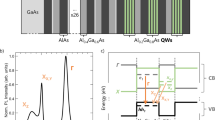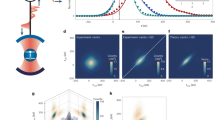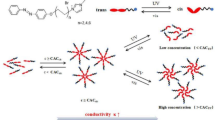Abstract
IT is well known that in a Geiger discharge some of the avalanche photons, presumably argon resonance photons1, are strongly absorbed in the quenching gas and are responsible for the discharge propagation in a narrow zone around the anode2. On the other hand photons of greater wave-length are also produced; these can release photo-electrons out of the cathode with subsequent production of secondary avalanches3,4. Some authors ascribe a dominant role in the discharge-spreading mechanism to the latter photons. In this assumption the velocity of discharge propagation would be determined by the photo-electric effect at the cathode and not by the photo-ionization of the gas near the anode, as is usually admitted. This contradicts the following experiment.
This is a preview of subscription content, access via your institution
Access options
Subscribe to this journal
Receive 51 print issues and online access
$199.00 per year
only $3.90 per issue
Buy this article
- Purchase on SpringerLink
- Instant access to full article PDF
Prices may be subject to local taxes which are calculated during checkout
Similar content being viewed by others
References
Van Zoonen, D., thesis, Delft, 14 (1954).
Loeb, L. B., “Basic Processes of Gaseous Electronics”, 954 (University of California Press, 1955).
Huster, E., and Ziegler, E., Z. Phys., 146, 281 (1956).
Chaudhri, R. M., Yar Khan, M., and Yunas, M., Nature, 179, 1364 (1957).
Mortier, P., and Roose, J., Proc. Phys. Soc., B, 67, 161 (1954).
Author information
Authors and Affiliations
Rights and permissions
About this article
Cite this article
MORTIER, P., DEMUYNCK, J. & SEGAERT, O. Role of Photons in Argon–Alcohol Counters. Nature 181, 1327–1328 (1958). https://doi.org/10.1038/1811327b0
Issue date:
DOI: https://doi.org/10.1038/1811327b0



